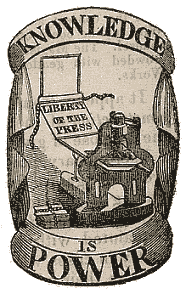



Government’s view of the economy could be summed up in a few short phrases: If it moves, tax it. If it keeps moving, regulate it. And if it stops moving, subsidize it.” —Ronald Reagan
There is a lot of talk from Democrats and the president that we spend too much on medical care, but little is said about how to reign in the spending on MEANS TESTED WELFARE!
One seventh(1/7) of our tax dollars go to this program that was started in 1964 by president Lyndon Johnson.
Means-tested welfare spending or aid to the poor consists of government programs that provide assistance deliberately and exclusively to poor and lower-income people. By contrast, non-welfare programs provide benefits and services for the general population. For example, food stamps, public housing, Medicaid, and Temporary Assistance for Needy Families are means-tested aid programs that provide benefits only to poor and lower-income persons. On the other hand, Social Security, Medicare, police protection, and public education are not means-tested; they provide services and benefits to persons at all income levels.
In fiscal year (FY) 2008, total government spending on means-tested welfare or aid to the poor amounted to $714 billion. This high level of welfare spending was the result of steady permanent growth in welfare spending over several decades rather than a short-term response to temporary economic conditions.
Of the $714 billion in welfare spending, $522 billion (73 percent) was federal expenditures, and $192 billion (27 percent) was state government funds. Nearly all state government welfare expenditures are required matching contributions to federal welfare programs. These contributions could be considered a "welfare tax" that the federal government imposes on the states. Ignoring these matching state payments into the federal welfare system results in a serious underestimation of spending on behalf of the poor.
Of total means-tested spending in FY 2008, 52 percent was spent on medical care for poor and lower-income persons,( so let us stop talking about the poor lacking medical care as a reason for dumping Free enterprise medical care and replacing it with government controlled care) and 37 percent was spent on cash, food, and housing aid. The remaining 11 percent was spent on social services, training, child development, targeted federal education aid, and community development for lower-income persons and communities. Roughly half of means-tested spending goes to disabled or elderly persons. The other half goes to lower-income families with children, most of which are headed by single parents.
Total means-tested welfare spending in FY 2008 amounted to around $16,800 for each poor person in the U.S.; however, some welfare spending goes to individuals who have low incomes but are not below the official poverty line (about $22,200 per year for a family of four). Typically, welfare benefits are received not just by the poor, but also by persons who have incomes below 200 percent of the federal poverty level ($44,400 per year for a family of four). Around one-third of the U.S. population falls within this lower income range. On average, welfare spending amounts to around $7,000 per year for each individual who is poor or who has an income below 200 percent of the poverty level. This comes to $28,000 per year for each lower-income family of four.
Welfare spending has grown enormously since President Lyndon B. Johnson launched the War on Poverty. Welfare spending was 13 times greater in FY 2008, after adjusting for inflation, than it was when the War on Poverty started in 1964. Means-tested welfare spending was 1.2 percent of the gross domestic product (GDP) when President Johnson began the War on Poverty. In 2008, it reached 5 percent of GDP.
Annual means-tested welfare spending is more than sufficient to eliminate poverty in the United States. The U.S. Census Bureau, which is in charge of measuring poverty and inequality in the nation, defines a family as poor if its annual income falls below official poverty income thresholds. If total means-tested welfare spending were simply converted into cash benefits, the sum would be nearly four times the amount needed to raise the income of all poor families above the official poverty line.
One may reasonably ask how government can spend so much on welfare and still have great inequality and so many people living in apparent poverty. The answer is that the Census ignores nearly the entire welfare system in its measurements. In its conventional reports, the Census counts only 4 percent of total welfare spending as income. Most government discussions of poverty and inequality do not account for the massive transfers of the welfare state.
And now with spending trillions on government health care an almost certainty and Cap and Trade that will cost billions to follow. It appears that Congress and the president are trying to bankrupt the USA! What other way is there for replacing the free enterprise Republic we presently have with socialism? Source: American Heritage








No comments:
Post a Comment